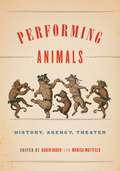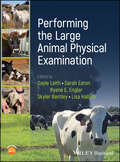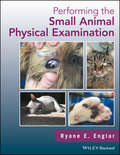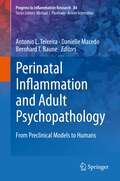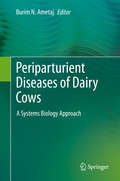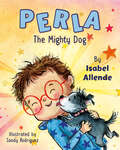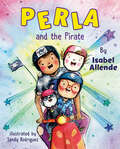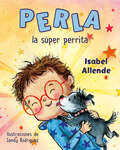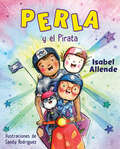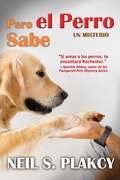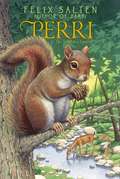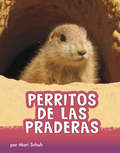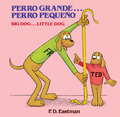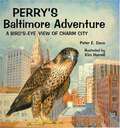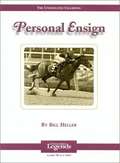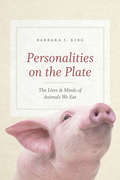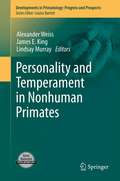- Table View
- List View
Performing Animals: History, Agency, Theater (Animalibus)
by Karen Raber Monica MattfeldFrom bears on the Renaissance stage to the equine pageantry of the nineteenth-century hunt, animals have been used in human-orchestrated entertainments throughout history. The essays in this volume present an array of case studies that inspire new ways of interpreting animal performance and the role of animal agency in the performing relationship.In exploring the human-animal relationship from the early modern period to the nineteenth century, Performing Animals questions what it means for an animal to “perform,” examines how conceptions of this relationship have evolved over time, and explores whether and how human understanding of performance is changed by an animal’s presence. The contributors discuss the role of animals in venues as varied as medieval plays, natural histories, dissections, and banquets, and they raise provocative questions about animals’ agency. In so doing, they demonstrate the innovative potential of thinking beyond the boundaries of the present in order to dismantle the barriers that have traditionally divided human from animal.From fleas to warhorses to animals that “perform” even after death, this delightfully varied volume brings together examples of animals made to “act” in ways that challenge obvious notions of performance. The result is an eye-opening exploration of human-animal relationships and identity that will appeal greatly to scholars and students of animal studies, performance studies, and posthuman studies.In addition to the editors, the contributors are Todd Andrew Borlik, Pia F. Cuneo, Kim Marra, Richard Nash, Sarah E. Parker, Rob Wakeman, Kari Weil, and Jessica Wolfe.
Performing Animals: History, Agency, Theater (Animalibus: Of Animals and Cultures #11)
by Karen Raber Monica MattfeldFrom bears on the Renaissance stage to the equine pageantry of the nineteenth-century hunt, animals have been used in human-orchestrated entertainments throughout history. The essays in this volume present an array of case studies that inspire new ways of interpreting animal performance and the role of animal agency in the performing relationship.In exploring the human-animal relationship from the early modern period to the nineteenth century, Performing Animals questions what it means for an animal to “perform,” examines how conceptions or this relationship have evolved over time, and explores whether and how human understanding of performance is changed by an animal’s presence. The contributors discuss the role of animals in venues as varied as medieval plays, natural histories, dissections, and banquets, and they raise provocative questions about animals’ agency. In so doing, they demonstrate the innovative potential of thinking beyond the boundaries of the present in order to dismantle the barriers that have traditionally divided human from animal.From fleas to warhorses to animals that “perform” even after death, this delightfully varied volume brings together examples of animals made to “act” in ways that challenge obvious notions of performance. The result is an eye-opening exploration of human-animal relationships and identity that will appeal greatly to scholars and students of animal studies, performance studies, and posthuman studies.In addition to the editors, the contributors are Todd Andrew Borlik, Pia F. Cuneo, Kim Marra, Richard Nash, Sarah E. Parker, Rob Wakeman, Kari Weil, and Jessica Wolfe.
Performing the Large Animal Physical Examination
by Sarah Eaton Ryane E. Englar Gayle Leith Skyler Bentley Lisa HallamEasy-to-follow guide to performing physical examinations on horses and ruminants, with a comprehensive collection of color photographs demonstrating important concepts and procedural techniques. Featuring hundreds of full-color images demonstrating the observation and hands-on clinical skills described, Performing the Large Animal Physical Examination offers a step-by-step guide to all aspects of assessing the health and wellbeing of equine patients and ruminants. Cattle, sheep, and goats are emphasized, with vital commentary about camelids included when applicable. Each section begins with information on observing, approaching, and safely handling patients, then discusses how to systematically evaluate each body system. A companion website features video clips demonstrating key concepts. Performing the Large Animal Physical Examination includes information on: Equine and ruminant behavior, including feeding, social, herd, and separation behaviors, sleep and rest disturbances, other stereotypiesThe distance examination, observation, and efficient methods to approach and restrain patients, with emphasis on flight zones and point of balance, safety of personnel, and animal welfareBig picture considerations with respect to the patient’s body, coat, and skin, including coat color and markings, weight and height estimations, and forms of patient identificationEvaluation of the head (eyes, ears, nose, and throat) as well as the cardiovascular, respiratory, lymphatic, gastrointestinal, reproductive, musculoskeletal, and nervous systems, plus considerations specific to the lameness examBasic clinical procedures and common clinical conditions specific to each body system in horses, small and large ruminants Performing the Large Animal Physical Examination is an essential resource for students and other veterinary team members to develop comfort and confidence observing, approaching, handling, and examining equine and ruminant patients, as well as for experienced practitioners who may wish to refine their skills and clinical acumen.
Performing the Small Animal Physical Examination
by Ryane E. EnglarPerforming the Small Animal Physical Examination offers an easy-to-follow guide to successfully executing a thorough physical exam in cats and dogs, with nearly 1,000 clinical photographs depicting step-by-step details. Provides comprehensive, practical information on the physical examination in small animal patients Presents nearly 1,000 color photographs with step-by-step details of the procedures and principles Offers advice on preparing the examination room, useful tips, and concrete guidance for examining each body system Outlines a systematic, in-depth approach to the initial examination in dogs and cats Supports new and experienced veterinarians and veterinary technicians alike in performing a thorough basic exam
Peril from the Past (K-9 Unit)
by Dana Mentink Shirlee McCoyAn old case brings a new threatCold Case Pursuit by Dana Mentink Decades after her parents&’ murders, Penelope McGregor&’s grateful the killer&’s finally been identified—until he comes after her. Now Detective Tyler Walker and his K-9 partner, Dusty, must protect Penelope and catch the culprit…while making sure his little girl stays out of the crosshairs. But can the single father outplay a killer whose endgame will leave no one safe?Delayed Justice by Shirlee McCoy Detective Bradley McGregor and his K-9 partner, King, come to the rescue when journalist Sasha Eastman&’s targeted by a shooter who looks just like her mother&’s murderer. But that killer supposedly died years ago in a shoot-out with the police. Now it&’s up to Bradley and King to protect Sasha…but how can they stop a killer who&’s already dead?New York Times Bestselling Author Shirlee McCoy Previously published as Cold Case Pursuit and Delayed Justice
Perinatal Inflammation and Adult Psychopathology: From Preclinical Models to Humans (Progress in Inflammation Research #84)
by Bernhard T. Baune Antonio L. Teixeira Danielle MacedoPerinatal psychiatry is an emerging field that investigates the role of perinatal events – for example pregnancy complications and infections – in the development of neuropsychiatric conditions, such as schizophrenia and mood disorders. Among the implicated pathological mechanisms, perinatal-induced inflammation seems to play a major role and is being considered as a potential target for therapeutic intervention. Bringing together various approaches in the field (preclinical and clinical, epidemiological, immunological and genetic methods), the book discusses the available evidence, the putative mechanisms and the challenges ahead.
Periparturient Diseases of Cattle
by M. V. Sc Tanmoy RanaManage the health of cattle at a critical stage with this essential reference Milk is one of the backbones of the global food economy, with its high vitamin content and key contribution to bone health. As a result, dairy farming is one of the most essential sectors of the global agricultural market, and the health of cattle is an issue of global importance. Periparturient diseases, those sustained in the period immediately before, during, and after giving birth, have a potentially devastating impact on the reproductive cycle of cattle, and an understanding of these conditions is a critical aspect of food production. Periparturient Diseases of Cattle offers a comprehensive overview of these diseases, their pathogenesis, and their treatments. Summarizing all of the major periparturient disorders, their etiology, and their management, it is a critical resource for veterinary practitioners and others for whom cattle health is of fundamental importance. As a reference, a diagnostic aid, and a tool in farm management, this volume is indispensable. Periparturient Diseases of Cattle readers will also find: In-depth description of disease advancement Detailed treatment of disorders including metritis, mastitis, ketosis, and many more Color figures and line drawings to illustrate key concepts Periparturient Diseases of Cattle is ideal for student and working veterinarians, academicians, farm managers, industrialists, farm owners, and many more.
Periparturient Diseases of Dairy Cows
by Burim N. AmetajThis book summarizes the results achieved so far by application of various systems biology sciences (including genomics, transcriptomics, proteomics, and metabolomics) in diagnosis of periparturient diseases as well as in identification of specific biomarkers in cattle. These emerging technologies help to extensively enhance our understanding of etiology and pathogenesis of periparturient diseases of transition dairy cows. Diseases to be discussed in this book include Metritis, Mastitis, Laminitis, Fatty Liver, Milk Fever and Displaced abomasum. This book addresses Professors, Veterinarians, researchers and advanced students working in the field of Veterinary Genetics with a special interest in dairy cattle health.
Perkins: The Cat Who Was More Than a Friend
by Linda YeatmanAlthough David is blind, he knows his beloved cat Perkins better than anyone else in the family; but when Perkins is accidentally exchanged for a similar cat, no one wants to believe David.
Perla The Mighty Dog
by Isabel AllendeIn the first children's book written by critically acclaimed, New York Times-bestselling superstar Isabel Allende, Perla, the mighty dog, teaches her human brother, Nico Rico, how to use his superpowers to stand up to a bully.Perla is a mighty dog who has two superpowers—making people love her, and roaring like a lion. When she finds out her human brother, Nico Rico, is being bullied at school, she knows she has to step in! But what will Perla do?In a charming and poignant story about the bond between child and pet, Isabel Allende makes her children's literary debut.
Perla and the Pirate
by Isabel AllendeIn the second children's book written by critically acclaimed, New York Times-bestselling superstar Isabel Allende, Perla, the mighty dog, saves her human brother, Nico Rico, after he gets lost on the way home from school.Perla is a mighty dog who has two superpowers—making people love her and roaring like a lion.When she finds out her human brother, Nico Rico, got lost on the way home from school, she knows she has to step in! But what will Perla do?In a charming and poignant story, Isabel Allende continues her series about the bond between a child and a beloved pet.
Perla la súper perrita
by Isabel AllendePerla es una súper perrita que tiene dos súper poderes: hacer que todos la quieran y rugir como un león.Cuando descubre que su hermano humano, Nico Rico, está siendo acosado en la escuela, ¡sabe quetiene que intervenir! ¿Pero quéhará Perla?En una encantadora y conmovedora historia sobre la amistad entre un niño y su mascota, Isabel Allende hace su debut literario infantil.
Perla y el Pirata (Perla and the Pirate Spanish Edition)
by Isabel AllendeEn la edición en español del segundo libro infantil escrito por Isabel Allende, autora aclamada por la crítica mundialmente y bestseller del New York Times, Perla, la súper perrita, salva a su hermanito humano, Nico Rico, cuando pierde su camino de regreso a casa.Perla es una súper perrita que tiene dos súper poderes: hacer que todos la quieran y rugir como un león.Cuando descubre que su hermano humano, Nico Rico, se ha perdido de camino a casa, ¡sabe que tiene que intervenir! Pero ¿qué hará Perla?En esta historia encantadora y emocionante, Isabel Allende continúa su serie de cuentos sobre el vínculo que existe entre un niño y su querida mascota.In the Spanish edition of the second children&’s book written by critically acclaimed, New York Times-bestselling superstar Isabel Allende, Perla, the mighty dog, saves her human brother, Nico Rico, after he gets lost on the way home from school.Perla is a mighty dog who has two superpowers—making people love her and roaring like a lion.When she finds out her human brother, Nico Rico, got lost on the way home from school, she knows she has to step in! But what will Perla do?In a charming and poignant story, Isabel Allende continues her series about the bond between a child and a beloved pet.
Pero el Perro Sabe
by Neil S. PlakcySteve Levitan de 42 años ha perdido todo lo que le importaba; su matrimonio, su hogar y su carrera. Después de terminar un breve periodo en la cárcel por hackear programas, vuelve a su ciudad natal en Stewart’s Crossing, PA con su cola entre las piernas. Con su oficial de libertad condicional encima de él, Steve empieza un negocio de escritura técnica y toma un trabajo de medio tiempo como profesor de inglés adjunto en su alma máter, Eastern College. Se vuelve a encontrar con su viejo amigo, el detective de policía local. Se juntan en el café y disfrutan de la belleza natural del condado de Buck y del entorno estimulante de la universidad. Empezar de cero lo ayuda a aliviar el dolor de todas sus pérdidas, incluyendo dos hijos nonatos que su exesposa perdió antes del divorcio. Lo último que necesitaba en su vida era un cobrador dorado peludo y demandante. Sin embargo, cuando su vecina, Caroline Kelly es asesinada. Steve se hace cargo del perro de forma temporal. Rochester parece estar decidido en resolver el misterio de la muerte de Caroline, buscando por pistas y presionando a Steve para que investigara. Mientras investigan el pasado de Caroline, sus amigos y su carrera, en busca de motivos. El lazo crece entre el hombre y el perro. Solo cuando Steve descubre una conexión entre la muerte de Caroline y una situación desafortunada entre sus estudiantes y su colega, es ahí donde se da cuenta que, para salvar su propia vida, y la vida del perro que ama, tendrá que enfrentarse cara a cara con el asesino que no tiene nada que perder.
Perri
by Felix Salten Barrows MusseyA young squirrel experiences the wonders of forest life and befriends a human toddler in this collectible edition of a classic animal story from the author of Bambi.Perri is a young squirrel living in Bambi's forest. She grows up, learning about survival, friendship, and love as she observes and interacts with the complicated world around her. Most exciting of all, she meets a three-year-old human girl who can understand and talk to animals! Called an "exquisite thing" by a 1938 Kirkus Reviews, this heartwarming classic is now available to a whole new generation of readers in this beautiful repackaged edition.
Perritos de las praderas (Animals en espanol)
by Mari Schuh¿Alguna vez has visto un agujero en la tierra y te has preguntado que´ hay dentro? ¡Podri´a ser un perrito de las praderas! Estos pequen~os y tiernos mami´feros construyen comunidades de tu´neles subterra´neos. Descubre fascinantes datos sobre los perritos de las praderas y ente´rate de lo que realmente ocurre bajo tierra.
Perritos terrier (¡Arriba la Lectura!, Level D #15)
by Annette Smith Lyz Turner-ClarkNIMAC-sourced textbook. Los perritos terrier son capaces de hacer muchas cosas. ¡Lee y lo verás!
Perro De Presa Canario: A Comprehensive Owner's Guide
by Manuel Curto GraciaIntroducing the Perro de Presa Canario, the mighty fighting dog of the Canary Islands, off the coast of Spain. <P><P>This Special Rare-Breed Edition is the first and only book written in English on this exciting breed of dog, written by the world's most famous Presa breeder and expert, Manuel Curtó Gracia from Tenerife. This informative, factual volume details the true history of the Presa Canario, as never before documented, told through first-hand accounts by old-time Presa dogmen from the islands. Additionally, the book discusses the breed characteristics, the official standard of the Spanish breed club, selecting a puppy, housebreaking and obedience training and health care.
Perro Grande... Perro Pequeno: Big Dog... Little Dog (Pictureback(r) Ser.)
by P. D. EastmanBilingual edition of the children's classic "Big Dog, Little Dog."
Perros de trabajo (¡Arriba la Lectura!, Level L #14)
by Julie HaydonLos perros de trabajo utilizan sus sentidos de muchas maneras. Protegen a personas, animales y objetos. Los perros de trabajo pueden ser lazarillos de una persona ciega o jalar de trineos pesados. ¡Hasta pueden actuar en cine o en televisión! NIMAC-sourced textbook
Perros rastreadores (¡Arriba la Lectura!, Level M #70)
by Heather Hammonds Elizabeth BottéUn perro rastreador detecta y sigue un olor para encontrar un objeto o a una persona perdida. Los perros rastreadores ayudan de muchas maneras a equipos de rescate de todo el mundo. También son compañeros muy fieles. NIMAC-sourced textbook
Perry's Baltimore Adventure: A Bird's-eye View Of Charm City
by Peter E. DansWhen an inquisitive peregrine falcon is born on a ledge of a Baltimore skyscraper, his father takes him on a tour of the city to satisfy his curiosity
Personal Ensign (Thoroughbred Legends #11)
by Bill HellerA racehorse who achieves a perfect record is a rarity, but to do so at the highest levels of the sport is even more rare. It takes a special horse to do that. Personal Ensign is such an animal. She ended her career undefeated in 13 starts and earned more than $1.6 million. But Personal Ensign’s path to perfection was not an easy one. She had to overcome a broken ankle at the age of two to return better and stronger than before. She had to face and beat males. Her defining moment, however, came in her final career start when she came from behind to win the 1988 Breeders’ Cup Distaff by a desperate nose over the Kentucky Derby-winning filly Winning Colors.
Personalities on the Plate: The Lives & Minds of Animals We Eat
by Barbara J. KingIn recent years, scientific advances in our understanding of animal minds have led to major changes in how we think about, and treat, animals in zoos and aquariums. The general public, it seems, is slowly coming to understand that animals like apes, elephants, and dolphins have not just brains, but complicated inner and social lives, and that we need to act accordingly. Yet that realization hasn’t yet made its presence felt to any great degree in our most intimate relationship with animals: at the dinner table. Sure, there are vegetarians and vegans all over, but at the same time, meat consumption is up, and meat remains a central part of the culinary and dining experience for the majority of people in the developed world. With Personalities on the Plate, Barbara King asks us to think hard about our meat eating--and how we might reduce it. But this isn’t a polemic intended to convert readers to veganism. What she is interested in is why we’ve not drawn food animals into our concern and just what we do know about the minds and lives of chickens, cows, octopuses, fish, and more. Rooted in the latest science, and built on a mix of firsthand experience (including entomophagy, which, yes, is what you think it is) and close engagement with the work of scientists, farmers, vets, and chefs, Personalities on the Plate is an unforgettable journey through the world of animals we eat. Knowing what we know--and what we may yet learn--what is the proper ethical stance toward eating meat? What are the consequences for the planet? How can we life an ethically and ecologically sound life through our food choices? We could have no better guide to these fascinatingly thorny questions than King, whose deep empathy embraces human and animal alike. Readers will be moved, provoked, and changed by this powerful book.
Personality and Temperament in Nonhuman Primates
by Alexander Weiss James E. King Lindsay MurrayRecently, there has been an increased interest in research on personality, temperament, and behavioral syndromes (henceforth to be referred to as personality) in nonhuman primates and other animals. This follows, in part, from a general interest in the subject matter and the realization that individual differences, once consigned to 'error' terms in statistical analyses, are potentially important predictors, moderators, and mediators of a wide variety of outcomes ranging from the results of experiments to health to enrichment programs. Unfortunately, while there is a burgeoning interest in the subject matter, findings have been reported in a diverse number of journals and most of the methodological and statistical approaches were developed in research on human personality. The proposed volume seeks to gather submissions from a variety of specialists in research on individual differences in primate temperament, personality, or behavioral syndromes. We anticipate that chapters will cover several areas. The first part of this edited volume will focus on methodological considerations including the advantages and disadvantages of different means of assessing these constructs in primates and introduce some statistical approaches that have typically been the domain of human personality research. Another part of this edited volume will focus on present findings including the physiological and genetic bases of personality dimensions in primates; the relationship between personality and age; how personality may moderate or impact various outcomes including behavior, health, and well-being in captive and non-captive environments. For the third part of the volume we hope to obtain summaries of the existing work of the authors on the evolutionary important of personality dimensions and guideposts for future directions in this new and exciting area of research.
